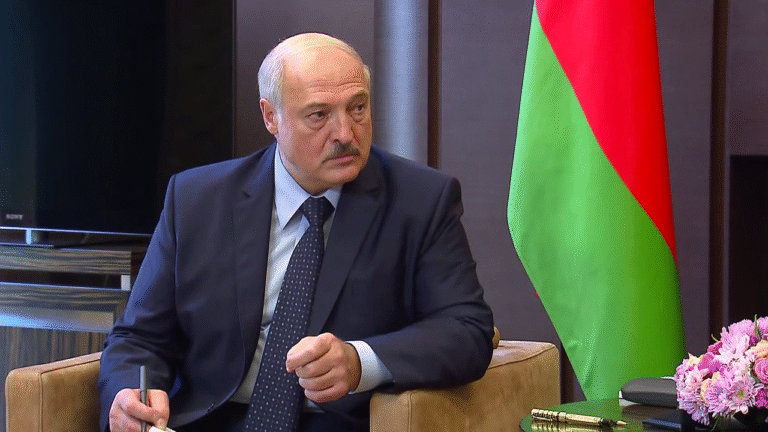
James Skinner
James is the Founder & Chief Executive of
CANZUK International in Vancouver, Canada
President Donald Trump’s announcement of a 25% tariff on Canadian imports into the United States, set to take effect on March 4th, 2025 has sent ripples across the global economic landscape.
Framed as a response to concerns over illegal immigration and drug trafficking, this move underscores the unpredictability of U.S. trade policy under the current administration. For Canada—one of the U.S.’s largest trading partners, with exports to the U.S. accounting for 75% of its total goods shipments in 2023—this tariff threatens significant economic disruption.
Yet, in the face of this challenge lies a golden opportunity for Canada, Australia, New Zealand, and the United Kingdom to forge a resilient, forward-looking economic alliance.
Yet, in the face of this challenge lies a golden opportunity for Canada, Australia, New Zealand, and the United Kingdom to forge a resilient, forward-looking economic alliance.
With shared values, robust economies, and a history of collaboration, these nations are uniquely positioned to weather this storm and emerge stronger together. Here’s how they can do it—and why we at CANZUK International think the future looks bright.
The Economic Context: A Tariff Shock, But Not A Knockout
The numbers paint a stark picture for Canada. In 2023, Canada exported $421 billion USD worth of goods to the U.S., representing nearly 67% of its GDP. The Canadian Chamber of Commerce’s Business Data Lab estimates that a 25% tariff could shrink Canada’s GDP by 2.6%, or roughly $78 billion CAD, costing each Canadian approximately $1,900 annually. Key sectors like automotive (20% of intermediary goods sourced from the U.S.), energy (97% of crude oil exports go south), and forestry face immediate pressure.
Retaliatory tariffs from Canada—already announced at 25% on $106.6 billion USD of U.S. goods—could escalate tensions further, risking a broader trade war.
Yet, Canada is not alone in navigating global trade headwinds. Australia and New Zealand, while less directly impacted by U.S. tariffs, face their own challenges with a slowing Chinese economy. China accounts for 33% of Australia’s exports and 23% of New Zealand’s.
The United Kingdom, post-Brexit, has seen its trade with the EU drop by 11% since 2019, though its recent entry into the Comprehensive and Progressive Agreement for Trans-Pacific Partnership (CPTPP) in 2023 signals a pivot toward new markets.
Together, these CANZUK nations boast a combined GDP of $6.8 trillion USD (2024 estimates), a figure surpassing Japan’s and rivaling the EU’s economic heft. This collective strength is the foundation for a proactive response.
Step 1: Canada’s Pivot—Diversify And Deepen CANZUK Ties
Canada’s first move must be diversification. The U.S. tariff, while painful, is a wake-up call to reduce reliance on a single market. Australia, New Zealand, and the UK offer immediate opportunities.
Australia’s demand for energy aligns with Canada’s vast oil and gas reserves—exports to Australia could offset losses to the U.S., especially as Canada’s Trans Mountain pipeline expansion boosts capacity. New Zealand’s agricultural sector, a global leader with $38 billion USD in exports in 2023, could supply Canada’s food needs, reducing dependence on U.S. imports like beef and grains. The UK, with its $3.2 trillion USD economy, is hungry for high-quality Canadian lumber and manufactured goods—trade between the two grew 14% in 2024 alone.
To make this pivot seamless, Canada should push for a CANZUK free trade agreement. Discussions would eliminate tariffs and harmonize standards, boosting intra-CANZUK trade that is currently valued at around $3.5 trillion USD.
Step 2: Australia And New Zealand—Strengthen The Pacific Anchor
Australia and New Zealand, less exposed to U.S. tariff fallout, can play a stabilizing role. Australia’s $1.7 trillion USD economy grew 2.1% in 2024, driven by mining and services, while New Zealand’s $250 billion USD economy posted a 1.8% gain, buoyed by dairy and tourism. Both nations are CPTPP members—a pact the UK joined in 2023 and Canada has been part of since 2018. This shared framework is a springboard for deeper CANZUK integration.
Australia could lead by expanding critical mineral exports (lithium, cobalt) to Canada and the UK, supporting green tech industries hit by U.S. supply chain disruptions. New Zealand, meanwhile, can leverage its expertise in sustainable agriculture to bolster food security across the bloc. A CANZUK free trade agreement would amplify these synergies, reducing reliance on volatile markets like China and the U.S.
Step 3: The United Kingdom—Bridge To The Commonwealth And Beyond
The UK’s post-Brexit journey has been one of reinvention, and CANZUK is its next chapter. With trade negotiations with the U.S. stalled and EU ties strained, the UK’s 2024 trade surplus with CANZUK nations reached $25 billion USD—a 10% increase from 2023. London’s financial hub status and the pound’s stability make it an ideal anchor for CANZUK investment.
As an idea, the UK ch=ould champion a CANZUK investment fund, pooling resources to support infrastructure and innovation such as renewable energy projects in Canada or tech startups in Australia. Pair this with facilitated migration (already backed by nearly 70% of Brits per polling) and the UK becomes a conduit for talent and capital, strengthening the bloc’s resilience.
Step 4: Collective Action—Trade, Defense, And Diplomacy
Beyond economics, CANZUK nations must align on defense and foreign policy. The U.S. tariffs highlight the need for reliable partners. Joint naval exercises in the Pacific, intelligence sharing via Five Eyes, and coordinated diplomacy at the World Trade Organization to challenge U.S. protectionism signal unity.
Economically, CANZUK trade enhancement could fast-track visa reforms and regulatory alignment, cutting red tape and boosting commerce.
The Bright Horizon: Why CANZUK Works
The data is compelling: CANZUK nations enjoy some of the world’s highest living standards, with GDPs per capita ranging from $48,000 USD (New Zealand) to $63,000 USD (Australia) in 2024. Their legal systems, rooted in British common law, ease collaboration, while widespread public support for CANZUK (that continues to grow) ensures political will.
Trump’s tariffs are a challenge, but they’re also a catalyst. Canada can lead by diversifying into CANZUK markets, Australia and New Zealand can anchor Pacific stability, and the UK can bridge to a broader Commonwealth resurgence.
Closer collaboration isn’t just necessary—it’s inevitable. The CANZUK vision is no longer a distant dream; it’s a practical, upbeat path to prosperity. Let’s seize this moment, because together, we’re unstoppable.
The Economic Context: A Tariff Shock, But Not A Knockout
The numbers paint a stark picture for Canada. In 2023, Canada exported $421 billion USD worth of goods to the U.S., representing nearly 67% of its GDP. The Canadian Chamber of Commerce’s Business Data Lab estimates that a 25% tariff could shrink Canada’s GDP by 2.6%, or roughly $78 billion CAD, costing each Canadian approximately $1,900 annually. Key sectors like automotive (20% of intermediary goods sourced from the U.S.), energy (97% of crude oil exports go south), and forestry face immediate pressure.
Retaliatory tariffs from Canada—already announced at 25% on $106.6 billion USD of U.S. goods—could escalate tensions further, risking a broader trade war.
Yet, Canada is not alone in navigating global trade headwinds. Australia and New Zealand, while less directly impacted by U.S. tariffs, face their own challenges with a slowing Chinese economy. China accounts for 33% of Australia’s exports and 23% of New Zealand’s.
The United Kingdom, post-Brexit, has seen its trade with the EU drop by 11% since 2019, though its recent entry into the Comprehensive and Progressive Agreement for Trans-Pacific Partnership (CPTPP) in 2023 signals a pivot toward new markets.
Together, these CANZUK nations boast a combined GDP of $6.8 trillion USD (2024 estimates), a figure surpassing Japan’s and rivaling the EU’s economic heft. This collective strength is the foundation for a proactive response.
Step 1: Canada’s Pivot—Diversify And Deepen CANZUK Ties
Canada’s first move must be diversification. The U.S. tariff, while painful, is a wake-up call to reduce reliance on a single market. Australia, New Zealand, and the UK offer immediate opportunities.
Australia’s demand for energy aligns with Canada’s vast oil and gas reserves—exports to Australia could offset losses to the U.S., especially as Canada’s Trans Mountain pipeline expansion boosts capacity. New Zealand’s agricultural sector, a global leader with $38 billion USD in exports in 2023, could supply Canada’s food needs, reducing dependence on U.S. imports like beef and grains. The UK, with its $3.2 trillion USD economy, is hungry for high-quality Canadian lumber and manufactured goods—trade between the two grew 14% in 2024 alone.
To make this pivot seamless, Canada should push for a CANZUK free trade agreement. Discussions would eliminate tariffs and harmonize standards, boosting intra-CANZUK trade that is currently valued at around $3.5 trillion USD.
Step 2: Australia And New Zealand—Strengthen The Pacific Anchor
Australia and New Zealand, less exposed to U.S. tariff fallout, can play a stabilizing role. Australia’s $1.7 trillion USD economy grew 2.1% in 2024, driven by mining and services, while New Zealand’s $250 billion USD economy posted a 1.8% gain, buoyed by dairy and tourism. Both nations are CPTPP members—a pact the UK joined in 2023 and Canada has been part of since 2018. This shared framework is a springboard for deeper CANZUK integration.
Australia could lead by expanding critical mineral exports (lithium, cobalt) to Canada and the UK, supporting green tech industries hit by U.S. supply chain disruptions. New Zealand, meanwhile, can leverage its expertise in sustainable agriculture to bolster food security across the bloc. A CANZUK free trade agreement would amplify these synergies, reducing reliance on volatile markets like China and the U.S.
Step 3: The United Kingdom—Bridge To The Commonwealth And Beyond
The UK’s post-Brexit journey has been one of reinvention, and CANZUK is its next chapter. With trade negotiations with the U.S. stalled and EU ties strained, the UK’s 2024 trade surplus with CANZUK nations reached $25 billion USD—a 10% increase from 2023. London’s financial hub status and the pound’s stability make it an ideal anchor for CANZUK investment.
As an idea, the UK ch=ould champion a CANZUK investment fund, pooling resources to support infrastructure and innovation such as renewable energy projects in Canada or tech startups in Australia. Pair this with facilitated migration (already backed by nearly 70% of Brits per polling) and the UK becomes a conduit for talent and capital, strengthening the bloc’s resilience.
Step 4: Collective Action—Trade, Defense, And Diplomacy
Beyond economics, CANZUK nations must align on defense and foreign policy. The U.S. tariffs highlight the need for reliable partners. Joint naval exercises in the Pacific, intelligence sharing via Five Eyes, and coordinated diplomacy at the World Trade Organization to challenge U.S. protectionism signal unity.
Economically, CANZUK trade enhancement could fast-track visa reforms and regulatory alignment, cutting red tape and boosting commerce.
The Bright Horizon: Why CANZUK Works
The data is compelling: CANZUK nations enjoy some of the world’s highest living standards, with GDPs per capita ranging from $48,000 USD (New Zealand) to $63,000 USD (Australia) in 2024. Their legal systems, rooted in British common law, ease collaboration, while widespread public support for CANZUK (that continues to grow) ensures political will.
Trump’s tariffs are a challenge, but they’re also a catalyst. Canada can lead by diversifying into CANZUK markets, Australia and New Zealand can anchor Pacific stability, and the UK can bridge to a broader Commonwealth resurgence.
Closer collaboration isn’t just necessary—it’s inevitable. The CANZUK vision is no longer a distant dream; it’s a practical, upbeat path to prosperity. Let’s seize this moment, because together, we’re unstoppable.
Heading photo: Canadian Chamber of Commerce
Share this:
Facebook
Twitter
LinkedIn
WhatsApp
Email




